Mumbai’s Biodiversity and the Kolis
Humans depend on nature for their survival. As a result, cultures, value systems, and behaviours are often a result of the environment and habitat one resides in. All over the world, indigenous communities have adapted to their natural environments over time. Indigenous populations residing in these spaces revere them and conserve the ecosystem through sustainable practices, as seen in farming and fishing. The rituals and beliefs of these communities often contribute to the protection of the environment. The state of Maharashtra in India is endowed with a variety of physio-geographical characteristics and a diverse climate, subsequently resulting in a wide variety of plant and animal life. The narrow coastal belt called the Konkan Coast of Maharashtra lies between the Arabian Sea and the Western Ghats. Sindhudurg, Ratnagiri, Raigad, Mumbai Suburban, Greater Mumbai, Thane and Palghar are the districts that comprise the coastal region of Maharashtra. The city of Mumbai is home to several indigenous communities that revere Mumbai’s natural habitat and have preserved it over the years.
Mangroves
Mumbai’s coastline is a mix of sandy beaches, rocky patches, and mangrove mudflats. Mangroves have helped keep Mumbai's coastline intact by trapping silt. Built on reclaimed territory that is hit by the sea on three sides, Mumbai is extremely prone to erosion, making the mangroves essential to the city. The mangrove environment offers vast untapped potential for producing salt, apiculture, fuel, fodder, and other natural items with medicinal value.
Fish, prawns, molluscs, crabs, and other aquatic animals inhabit the waters around mangroves, providing fishing communities with a means of livelihood. One such community is the Koli community of Mumbai. The Kolis revere the mangroves because they are the breeding and nursery grounds for the sea organisms that are essential to their survival. Mangroves provide a habitat for a vast array of wildlife, including the millions of migratory birds that visit Mumbai.[1]
The coastal region of Mumbai was once home to a mangrove forest that thrived in the inter-tidal zones. Lost in the process of land reclamation and urbanization, patches of mangroves can be seen in certain pockets like the Thane and Vasai creeks, Manori, Malad, Mahim-Bandra, Versova, Sewree, and the Mumbra-Diva region.[2] Mumbai’s coastal ecosystem and the Koli fishing community share a complex relationship with the mangroves as the tidal forests hold cultural, ecological and historical significance for the community.
Aquatic Species
The Koli fishing community residing in Mumbai and its surrounding regions fish in the coastal waters, rivers, and creeks of Mumbai. Fish is the main source of their livelihood and an essential component of Koli culture and daily existence. A substantial part of the Koli population is dependent on fishing, both for selling the catch and for consuming the fish. While several species of fish are found along Mumbai’s coast, only a few are in high demand in the market.[3]
Fish is locally called macchi, masli, or mhavra by the Kolis. A number of Koligeets (popular folk songs of the Kolis) are structured around fish or the sale of fish, and they refer to the names of different kinds of fish. The Koligeet Chikna Chikna Mhavra Maza revolves around the sale of fish and convincing the customer to buy fish.[4] In the song, the Koli fisherman or fisherwoman is asking the customer to take home the fresh catch that, when consumed, will provide energy to the person (…angaan jor yeil kaam kaaza dada kaam kaaza, chikna chikna mhavra maza; tatki che davyacha hyo raja dada hyo raja, gheun shi jaa re taaza taaza dada taaza taaza…). Another Koligeet, Kolin Aali Kolivaryachi,[5] talks of a Koli woman with a fish basket on her head (kolin aali kolivaryachi, kolivaryachi, doi var topli mhavryachi). It refers to aquatic animals like nivta, gori chimbori, karli, kardi, vakti, ghol, jitara, kupa, dhoma, bombil, bangda, shevand, surmai, sarga, ravas, halwa, and others as the wealth of the sea (daulat haay hi daryachi). Another interesting instance is seen in the Koligeet Shingala Navra[6] in which several aquatic species are anthropomorphized in a wedding environment, are anthropomorphised in a wedding environment.
While the songs describe a variety of fish and marine life, the unfortunate reality is that much of these are rapidly disappearing from the coastal city’s waters, owing to rapid urbanization, overfishing and climate change, among other factors. This essay aims to list and describe some of the major aquatic species that are widely bought, sold, and consumed in Mumbai’s markets to preserve indigenous knowledge of local fauna.
Prawns are crustaceans that belong to the genus Penaeus. In Maharashtra, they are locally known as kolambi or kolbi by the Koli fishing community and come in different sizes and kinds. Medium-sized prawns (Metapenaeus affinis) are greyish-brown in colour and are called chaiti kolambi. They are abundantly available once fishing starts after Narali Pornima in the month of August. Their availability continues till the month of October. After the festival of Diwali till the month of November, tiny prawns (Acetes indicus) are available. Harsha Tapke, a local fisherwoman turned entrepreneur from Versova, says that the availability of prawns and other fish in good quantities during these months helps them recover the cost incurred for running their fishing boats and provides for their meals. During winter (December to February/March), the kapshi/kapsi kolambi (pink prawns; Metapenaeus monoceros) begin to appear. It is called kapsi (stemming from the local word for cotton, kapus) because it is soft and cooks quickly. The safed kolambi, also referred to as jitara or the Indian white prawn (Fenneropenaeus indicus), is also available during this time. These are also known as jumbo prawns as well, and a sizeable amount of these prawns are available in the month of May. They are naturally greyish in colour when fresh, but the colour changes to white once stored in ice. Goinar prawn (Solenocera crassicornis) is a coastal mud prawn that is available starting from the festival of Holi. Tiger prawns (Penaeus monodon) are seen in various colours including green, grey, or brown, depending on the region. During the months of April and May, smaller prawns are more common. By law, fishing in the Arabian Sea is prohibited for a stipulated period of about two months during the monsoon season. This allows time for the prawns and other aquatic species to grow and breed until fishing resumes on the eve of Narali Pornima. The Kolis also dry shrimps and prawns (both shelled and deshelled). The popular varieties include dried baby shrimps (jawla), dry shrimps (karandi/sukat), and dry deshelled prawns (sode).

Shevand or lobsters are primarily available since the month of December. Two notable species in the region include the flathead locust lobster (Thenus orientalis) and the spear lobster (Linuparus somnious).
Along with prawns, smaller fish like mandeli, bombil, dhome, and lepa are caught in trawler fishing. However, these are not as plentiful as the number of prawns caught. In December, the catch of fish near the coastal regions decreases, and fishermen leave the coastal regions to find fish elsewhere. They go even further than Khanderi-Underi islands or up to Alibaug to procure fish. Rani maasa, squid, cuttlefish, and kapshi prawns are available during the winter months.
Mandeli or golden anchovy (Coilia dussumieri) is a small fish that is abundantly available. Due to its presence in large quantities and its easy availability throughout the year, the fish can be obtained for very cheap compared to other fishes. Mandeli is also dried by the Kolis. Other varieties of anchovy include the orangemouth anchovy (Thryssa vitrirostris) and the Commerson’s anchovy (Stolephorus commersoni).
A fish variety named after the region of British Bombay is the Bombay duck. It is a popular seafood dish in Maharashtra. Bombay duck (Harpodon neherus) or bombil is a fish native to Mumbai’s waters. It has a gelatinous appearance and a gaping mouth with sharp teeth. Dried Bombay duck is one of the most well-known dry fish varieties. Bombay ducks are dried on racks made of bamboo stilts called valantis by the Kolis. It is found in large quantities during April and May.
Common croaker fish (Johnius dussumieri), locally known as dhoma, is a brownish-coloured fish that is often caught with prawns as it feeds on them.[7] It is cheap and available throughout the year. Lepa (sole) (Cinoglossus dubius or Cinoglosus arel) is a variety of flatfish found in the Arabian Sea. Rani maasa or pink perch (Nemipterus japonicas) is a pink-coloured fish available during winter.
The Indian squid (Loligo duvauceli), locally referred to as makul, mhakul or makali, is a cephalopod with a soft, pale white body with several arms and two tentacles.[8] There are several other varieties of squid called the cuttlefish (Sepia aculeate, Sepia pharaonic, and Sepiella inermis).
The Indian butterfish or pomfret is a widely sold and loved fish for its delicate flavour. Locally called paplet, it is a popular item on Indian seafood menus. They have a distinctive diamond shape and a taste that sets them apart. It is one of the most expensive fish on the market. Pomfrets are also dried. When asked about drying Pomfrets in today’s age, Tapke says that pomfrets are so expensive that she and her family would rather consume them as a part of their meal than dry them if the fish remain unsold. Three species of pomfret are found near the coastal waters of Mumbai. It is available for most of the year but is fished extensively from September to January. The most common pomfret species is a silvery white fish referred to as the white pomfret or the silver pomfret (Pampus argenteus). The Chinese pomfret (Pampus chinensis), also known as kafri or saraga, is similar to the silver pomfret but is covered in dark pigmented spots. The black pomfret (Parastromateus niger) is locally referred to as halwa and is largely available from September to December.
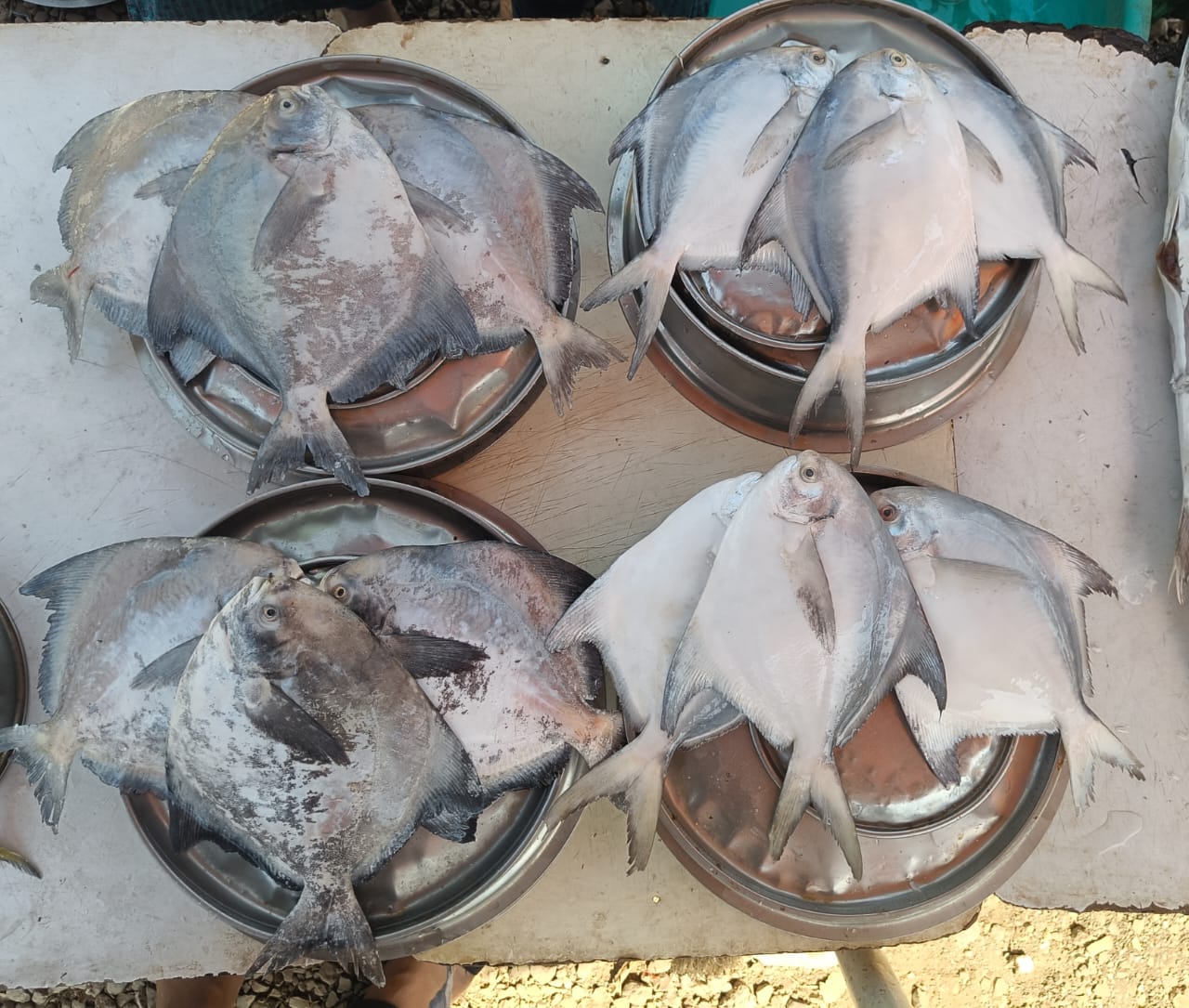
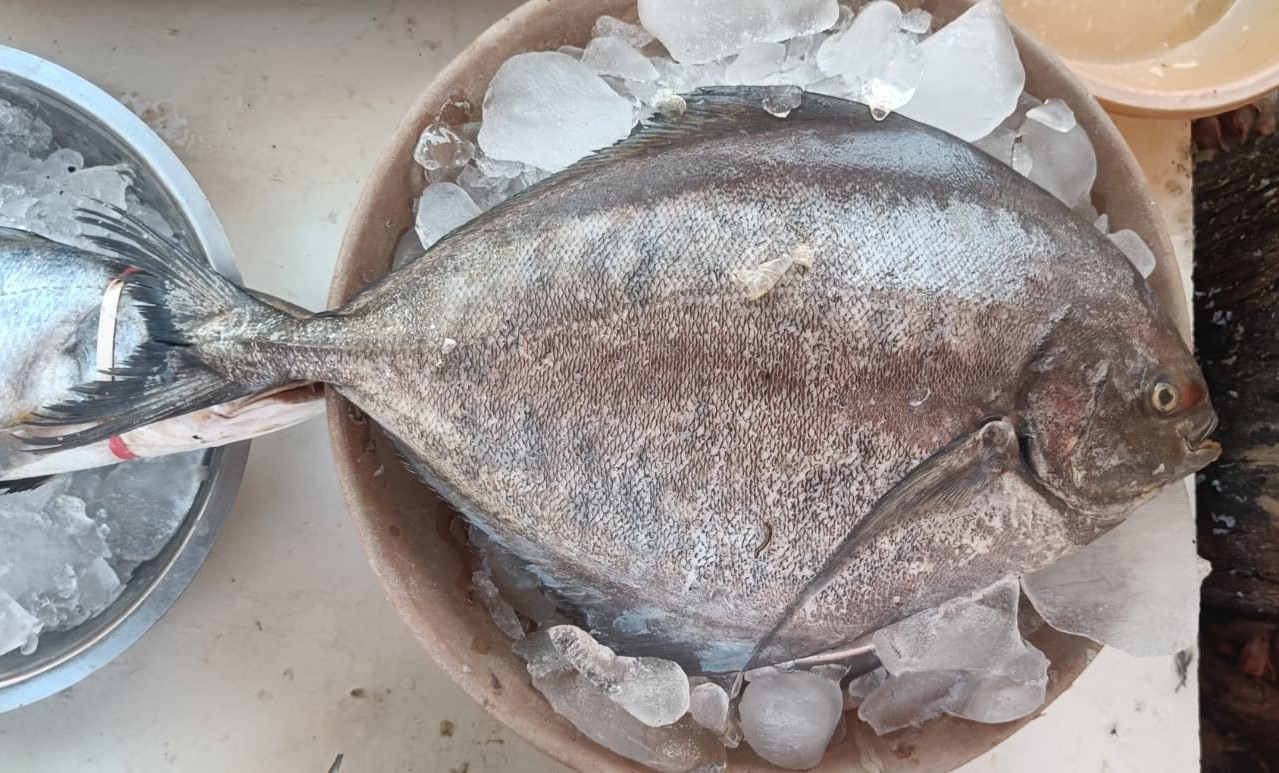
An indulgent delicacy, the Indo-Pacific king mackerel or the spotted seer fish (Scomberomorus guttatus) bears the local name Surmai. It is a silvery fish that is fairly expensive. Other varieties of seer fish include the narrow-barred Spanish mackerel (Scomberomorus commerson) and the streaked Spanish mackerel (Scomberomorus lineolatus). Surmai is primarily available from September to March. After Holi, surmai is comparatively less abundant. Indian oil mackerel (Rastrelliger kanagurta), or bangada, has fairly good demand in the fish market. It is available in large quantities during August, September, and October. The Indian oil sardine (Sardinella longiceps), or tarli in the local dialect, is a fairly popular commercial fish that is often caught with bangada.
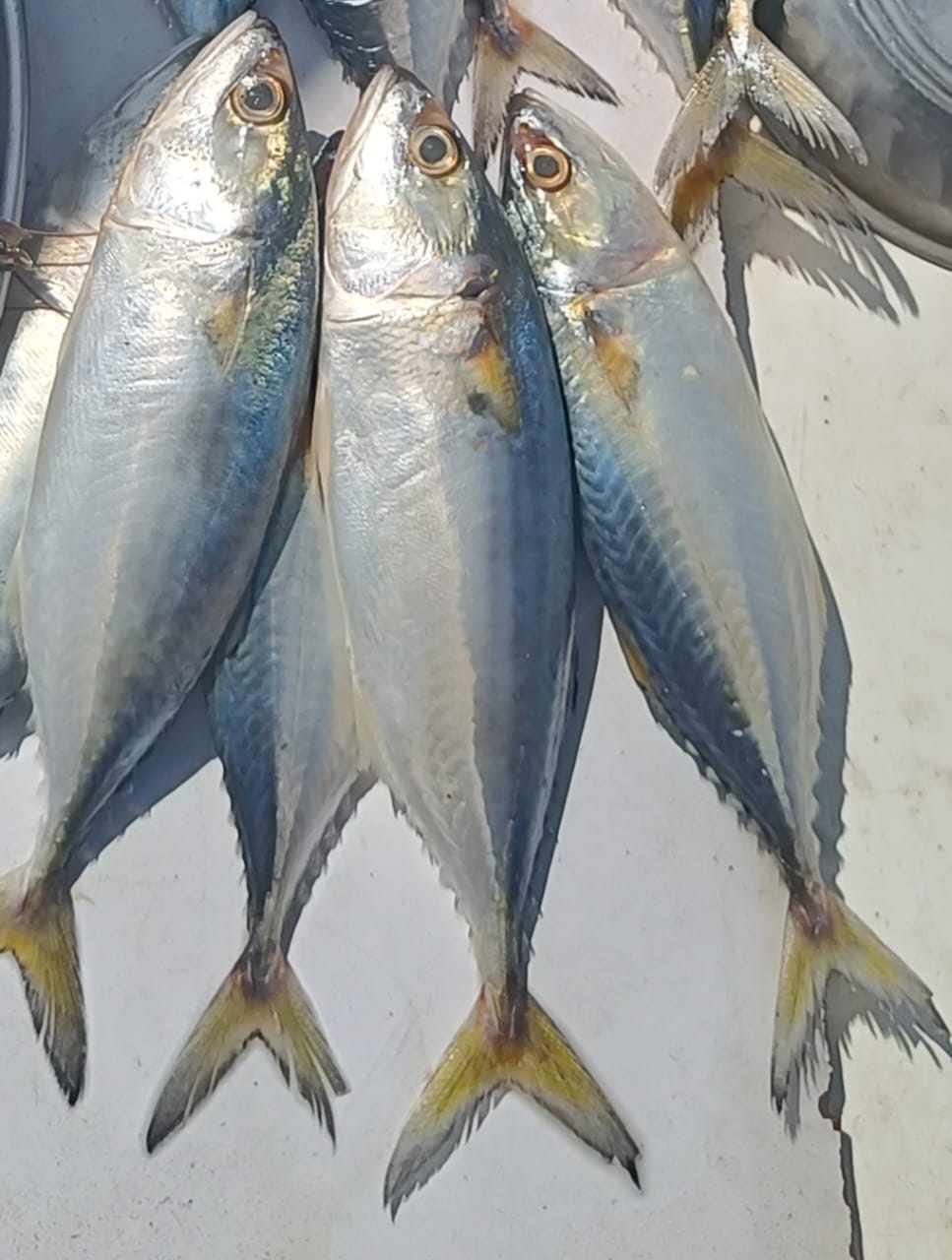
Ribbon fish or hairtail (Lepturacanthud savala) is a flatfish that appears like a ribbon. The Kolis call this fish vakti. Typically, this fish is available in good quantity from the arrival of the Holi festival. Vakti is sold both dried and fresh. Ravas, or Indian salmon (Eleutherona tetradactylum), is an expensive fish that is available for most of the year.
Spotted croaker (Protonibea diacanthus), locally referred to as ghol, is primarily available primarily in winter. This fish is offered to Vetal Dev. Catching ghol is considered auspicious during Holi. If it is caught on the day of the festival, the fish is venerated and tied to the boat. Once the fisherman returns home, the fish is then offered as naivaidya to the Holi bonfire. If the fishermen do not catch any ghol, then tuna, halwa, ravas, or any other available fish is offered instead.
Whip-tail stingray (Himantura uaranacoides), called pakat, is dried during April and May. This dried pakat is cooked and offered to the goddess Gauri as naivaidya during the Gauri Ganpati festival.
Sharks are also found in the coastal waters of Mumbai. The two species that are generally sold and consumed by the Kolis are the blacktip reef shark (Carcharhinus melanopterus) and the whitetip reef shark (Triaenodon obesus). In the local language, the blacktip reef shark is called mori, while the whitetip reef shark is known as mushi.
Multiple species of tuna, or kupa, are caught, including mackerel tuna (Euthynnus affinis), yellowfin tuna (Thunnus albacares), skipjack tuna (Katsuwonus pelamis), bigeye tuna (Thunnus obesus), and frigate tuna (Auxis thazard). Tuna, especially mackerel tuna, is abundantly available in September and October, as well as during March and April.
The red snapper (Lutianus argentimaculatus), also known as Raja Rani, is called tambushi, tamboshi, or tambusa. Its name derives from its reddish-pink metallic scales.
Barramundi (Lates calcarifer), also known as giant seaperch or cock-up, is mostly seen in winter. It is locally known as jitada or khajura. Around four species of catfish, or shingala, are found, including frog-headed catfish (Batrachocephalus mino), dusky catfish (Tachysurus sona), small eye catfish (Tachysurus jella), and marine catfish (Tachysurus dussumieri).
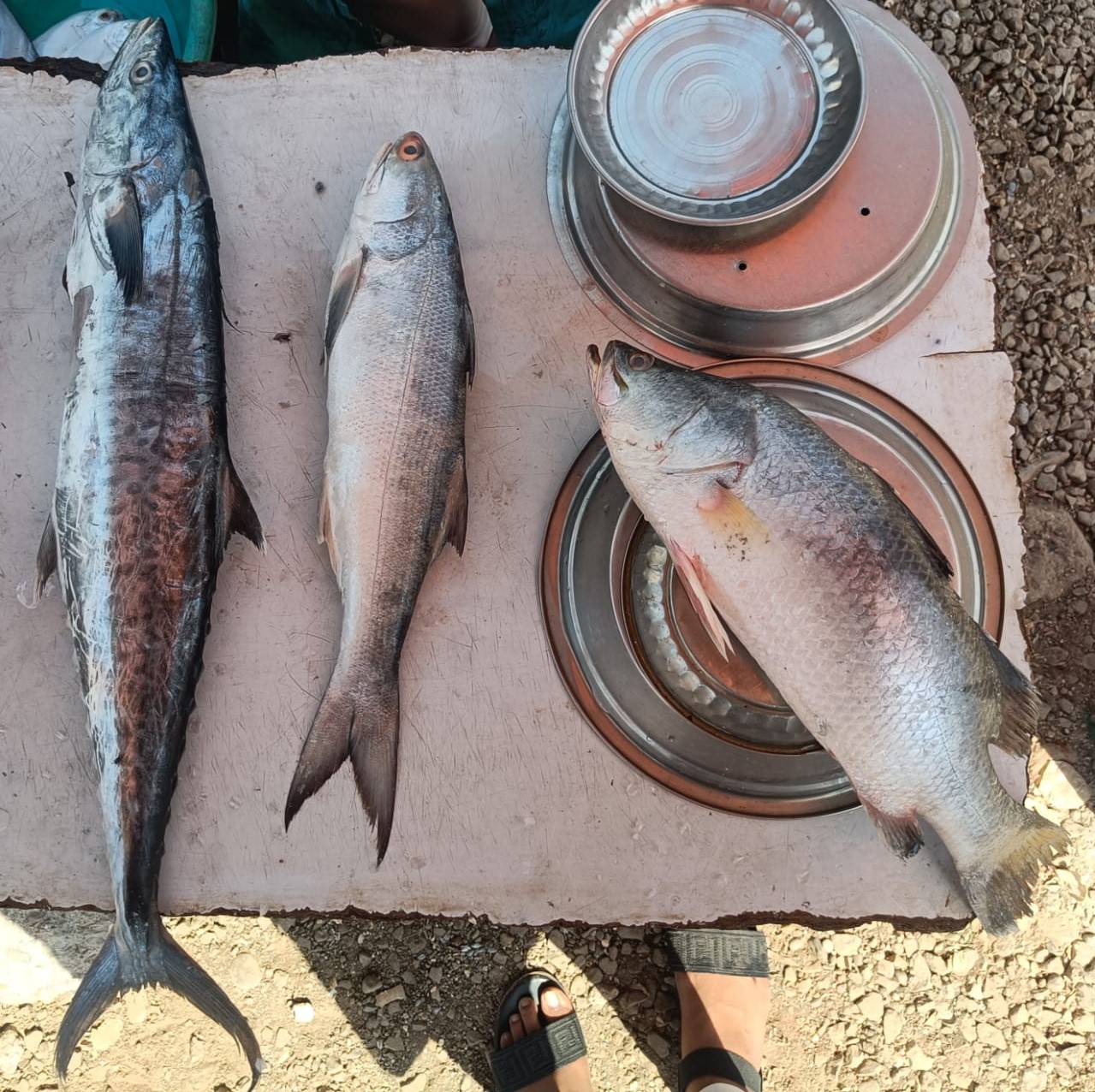
Mudskippers (Boleophthalmus dussumieri and Boleophthalmus boddaerti) are amphibious fish found in mudflats and mangrove intertidal zones. They are locally known as nivta.
The silver barfish or the wolf herring (Chirocentrus dorab) is called karli. The common eel (Congresox talabonoides) called vaam is caught during September and October, as well as during March and April on occasion.
The ladyfish, or murdushya, commonly found during winter belongs to the genus Elops.
Gaboli is the local name for fish roe, the ripened but unfertilized fish eggs. It is procured from various fish, including bombil, surmai, ravas, paplet, and ghol, with each having their own unique taste.
During the two months when fishing is prohibited, crabs and other shellfish procured from shallow waters are a major part of the Koli diet. Mud crabs (Scylla serrata) are greenish-brown crabs found in mangroves and sheltered coastal environments. The three-spot swimming crab (Portunus sanguinolentus) and the blue swimmer crab (Portunus pelagicus) or neeli chimbori are usually found in sandy and muddy habitats. Crabs are called khekde or chimbori by the Kolis and are offered to Gauri during the Gauri Ganpati festival. Asiatic hard clams (Meretrix sp.) are called tisrya while edible oysters (Crassostrea gryphoides, Crassostrea cucullata, and Craassostrea discoidea) are called kaalaw.
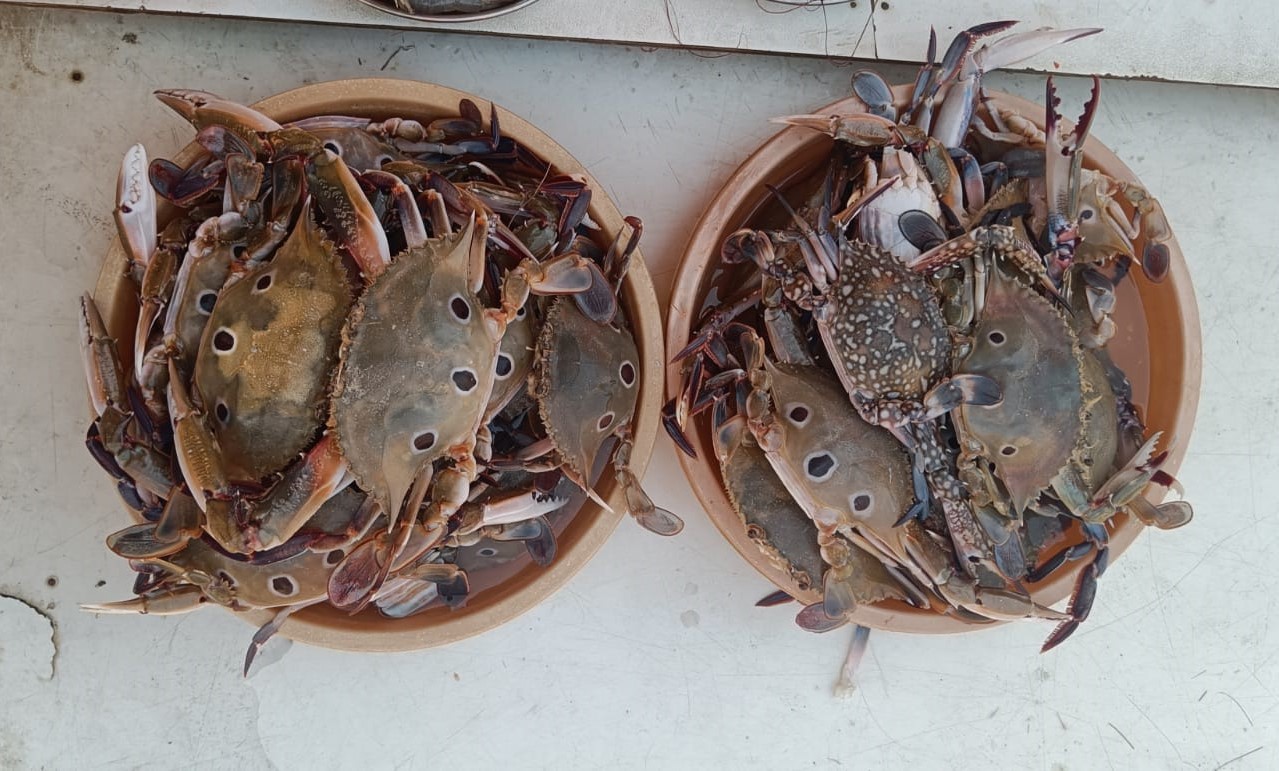
Indigenous peoples have a unique knowledge and understanding of their environment. Their cultural practices and ways of living align with the conservation and preservation of the biodiversity and ecosystem around them. Larger aquatic animals like whales and porpoises are treated as dev masa (god fish) and worshipped by the Kolis with the belief that these animals would protect them.
Tapke says that any kind of fish generally tastes better in winter. Although the quantity and size of fish have reduced now. In her younger days, when artisanal fishing was the dominant practice, the quantity as well as the quality of fish were better.
Footnotes:
[1] Sarkar Leena, Mangroves in Mumbai
[2] ibid
[3] Personal Interview of Mrs. Harsha Tapke, Versova
[4] Chikna Chikna Mhavra Maza, YouTube Video
[5] Kolin aali Kolivaryachi, YouTube Video
[6] Shingala navra, YouTube Video
[7] Kehimkar, Introduction to Coastal and Marine Biodiversity of Maharashtra, 79
[8] Ibid, 55
Bibliography:
Harsha Tapke (fisherwoman and entrepreneur from Versova Koliwada), interview with the author, March 9, 2024.
Sarkar, Leena. “Mangroves in Mumbai.” International Journal of Creative Research Thoughts, Volume 5, Issue 4 (2017): 1487–88
Karbhari, J. P. "Scientific, common and local names of commercially important marine fishes and shell fishes of Maharashtra and Gujarat coasts." Marine Fisheries Information Service, Technical and Extension Series 44 (1982): 18-23.
Kehimkar, Issac. Introduction to Coastal and Marine Biodiversity of Maharashtra. Deutsche Gesellschaft fur Internationale Zusammenarbeit (GIZ), GmbH, Indo-German Biodiversity Programme, 2017.
Umap, Shahir Vithal. “Chikna Chikna Mhavra Maza.” 1984: Saregama India, Ltd., November 3, 2014. YouTube video, 5:24. https://www.youtube.com/watch?v=vEdMioTev9s
Chiplekar, Anant. “Kolin Aali Kolivaryachi.” 2001: Saregama India, Ltd., February 27, 2019. YouTube video, 2:46. https://www.youtube.com/watch?v=OD3LPQwRlpo
Narayan, Shrikant. “Shingala Navra.” 1990: Ishtar Music Pvt. Ltd., December 24, 2015. YouTube video, 6:07. https://www.youtube.com/watch?v=3O8DRmai0iQ